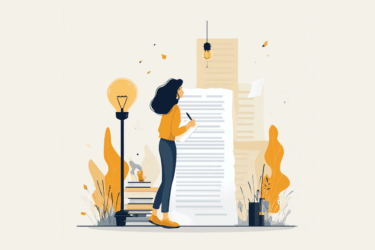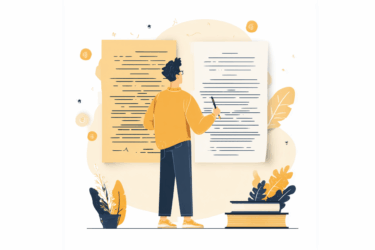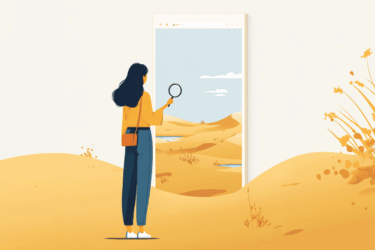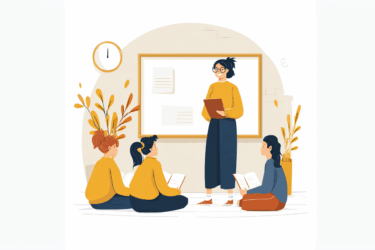AI tools are controversial, confusing…and are here to stay. So, the best way to deal with them is to embrace all the perks and challenges the revolutionary technologies bring to us and learn to introduce them responsibly. Moreover, how we tackle the current AI situation may shape the future of these technologies, education, and the way people learn and work with information. Let’s dig into the pros and cons of Chat GPT in education and look for constructive solutions.
AI can facilitate teachers’ work
A large part of teachers’ working routine consists of mundane tasks. Checking those essays and tests (and trying to stay focused!), crafting those quizzes and tests (and doing their best to remain creative!), and filling out those forms and papers (and making every possible effort to carve out some time to watch that new video related to the subject to remain in trend!) So, with all this workload educators are already superhumans, and a bit of AI’s assistance won’t hurt anyone. Modern AI-based solutions can
- help with grading, automatically processing the students’ assignments, and providing an unbiased evaluation along with the feedback the teacher can use to focus on problematic parts;
- assist with quizzes, tests, and task creation, reducing the teachers’ workload and leaving more time for interacting with students, creativity, and self-development;
- create presentations, charts, illustrative materials, and even videos within minutes, making the topic more comprehensible without demanding a filmmaker’s degree;
- brainstorm, helping to come up with novel approaches to teaching, and making the educational process more interactive, effective, and fun.
However, students also use ChatGPT
AI can sound fantastic for teachers unless it comes to checking the assignments. Since Chat GPT is a publicly available resource, students widely use it to help with their tasks. Unfortunately, often this “help” goes far beyond the ecological ways of implementation of chatbots into the writing process. Students simply ask AI to generate the text for them, violating the academic integrity norms, hindering their own progress, and leading to AI plagiarism. Moreover, such behavior impedes the proper evaluation of students’ skills and knowledge, making the educational process less effective.
The possible solutions here are:
- To educate students on the importance of academic integrity, along with the effective and responsible implementation of AI technologies, thus fostering young professionals ready for the nowadays challenges.
- To emphasize the importance of citing AI as a source if used in the paper.
- To set clear guidelines on the extent of AI usage allowed in class, and encourage a healthy balance between addressing the Chat GPT benefits and maintaining academic honesty with writing authenticity.
- To use a reliable AI checker to unveil the papers generated by Chat GPT, so the teachers don’t waste precious time checking the robot text, while students face the consequences of AI cheating.
AI makes learning more accessible
Chat GPT cannot replace humans but can become a perfect robotic tutor or study buddy, that never gets tired of endless explanations, task repetition, and breaking a big scary topic into smaller manageable steps. The chatbot can design tasks and clarify questionable issues based on the student’s needs and knowledge level, enabling one to learn and practice anytime anyplace.
- Chat GPT can design math problems, explain complicated subjects, and imitate conversations in different languages so one can train.
- Chatbots can accelerate studying for people with disabilities, converting text-to-speech and speech-to-text for visually impaired individuals, simplifying complicated materials for students with learning difficulties, and enabling anyone to proceed at their comfortable pace.
However, AI worsens the digital divide
Since not all students have equal access to technologies, heavily relying on AI can only deepen the gap between learners.
The possible solution here is providing equipment at school so all students have equal opportunities regardless of their backgrounds.
However, AI can be wrong and biased
Chat GPT is trained on enormous amounts of data present online. This means no one guarantees it is true or objective, albeit many tend to perceive AI’s output as such. The chatbot’s main task is to provide an output to the users’ prompt. Pursuing this goal, it can “hallucinate”, which is producing non-existent pieces of data, fabricating the URLs, and providing facts that are not true. Moreover,
- AI is biased, generating the output from the information it has been trained at, so its output can’t be considered exhaustive or objective;
- AI’s knowledge base includes the information available before 2021, which means the Chat GPT outputs can be irrelevant and outdated now.
The possible solutions here are:
- Fact-checking and double-checking. AI can narrow the search options, provide examples, or help to focus on the issue one needs to study deeper, but should never be perceived as an ultimate truth.
- Introducing writing ethics classes into the school curriculum, fostering independent mindset and critical thinking, and educating the students on AI usage pitfalls.
However, AI collects data
Open AI saves the user-chatbot dialogs for future improvement and training, which can include sensitive data. This means, that if the hackers gain access to the information, it can compromise the teachers’ and students’ privacy. Hence, the possible solution here is, once again, educating students and staff on the pitfalls of AI implementation, and never providing personal data in chatbot dialogues.
It may seem that the AI’s drawbacks outnumber the potential benefits. However, if we address the quality and look at how AI-based tools can streamline the workflow, it becomes apparent that efforts made to mitigate the problematic issues are worth a try. Considering Chat GPT as an assistant instead of relying on it, and learning to use it responsibly, is a healthy way to embrace the solutions that have revolutionized our world, and become part of the change for the better!
We provide accurate AI detection and plagiarism check and care about your data security. Try our all-inclusive toolkit, and elevate your teaching routines now!






